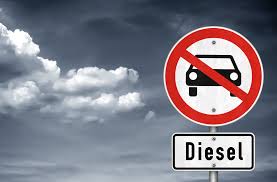Corruption comes in all shapes, sizes and forms. It is certainly far beyond bribery made illegal under the Foreign Corrupt Practices Act (FCPA) and UK Bribery Act. I was reminded of this fact this week and the company formerly known as Chrysler Group LLC, now FCA US LLC (Chrysler or the company herein) was criminally sentenced to, according to a Department of Justice (DOJ) Press Release, “pay a fine of $96,145,784; and a forfeiture money judgment of $203,572,892. The court also imposed a three-year term of organizational probation.” About all I can say after reading the Press Release and underlying Information and Plea Agreement is that both Lee Iacocca and Walter Chrysler are both turning over in their graves now.
The Plea Agreement detailed a series of corruption so deep and systemic within the organization that it is a wonder anyone ever wanting any type of clean diesel vehicle would ever purchase a Chrysler again (even if it is re-monikered an ‘FCA US LLC’ vehicle). Indeed, the over $300 million criminal assessment was only after a $310 million civil penalty. This means over $600 million in civil and criminal fines and penalties before we even get to pre-resolution investigative costs and post-resolution remediation. If you apply the standard multiplier of pre and post settlement costs of two to five X; you can see the company paid a very large price for its conduct.
The basic facts of the case and actions by Chrysler included deliberately creating a vehicle designed to evade and defeat emissions testing from at least 2010 up to 2017, some two years after the Volkswagen emission testing scandal broke. In addition, Chrysler engineers and others intentionally lied to the US government during the emission certification process. Finally, the conduct of Chrysler after the scandal broke was so forlorn the company did not receive full credit for full cooperation or in accepting full responsibility for its actions.
The underlying facts were as disheartening to read as any I have recently come across. According to the Information, beginning at least as early as 2010, Chrysler developed a new 3.0-liter diesel engine for use in FCA US’s Jeep Grand Cherokee and Ram 1500 vehicles to be sold in the United States. They were marketed as “clean EcoDiesel” vehicles with best-in-class fuel efficiency. However, and to the contrary, the company installed software features and engaged in other deceptive and fraudulent conduct intended to avoid regulatory scrutiny all the while “maintaining features that would make them more attractive to consumers, including with respect to fuel efficiency, service intervals, and performance.”
According to the Information, the company purposely calibrated the emissions control systems on the vehicles to produce less NOx emissions during the federal test procedures, or driving “cycles,” than when the vehicles were being driven by customers under normal driving conditions. But as the Press Release noted, Chrysler took it several steps further as it “engaged in deceptive and fraudulent conduct to conceal the emissions impact and function of the emissions control systems from its U.S. regulators and U.S. customers by (a) submitting false and misleading applications to U.S. regulators to receive authorization to sell the vehicles, (b) making false and misleading representations to U.S. regulators both in person and in response to written requests for information, and (c) making false and misleading representations to consumers” in advertisements and in window labels, including that the vehicles complied with US emissions requirements, had best-in-class fuel efficiency as measured by EPA testing, and were equipped with “clean EcoDiesel engine[s]” that reduced emissions.
A number of those identified in the Plea Agreement have been criminally indicted as well. According to the Press Release, “In the related criminal prosecution, three FCA employees, Emanuele Palma, Sergio Pasini, and Gianluca Sabbioni were indicted for conspiracy to defraud the United States and to violate the Clean Air Act and six counts of violating the Clean Air Act. They await trial.” Of these individuals who were involved, most worked on the corrupt emissions work around beginning as early as 2010 and some were with the company up to 2020.
For reasons not explained in any of the resolution documents, the company avoided the imposition of an external monitor. They do however have a reporting obligation to the DOJ of annual reports on the compliance program required under the Plea Agreement. The reporting is required for three years on a go-forward basis.
Join me tomorrow where I look at some of the lessons learned from this sordid affair for the anti-bribery/anti-corruption compliance professional.






